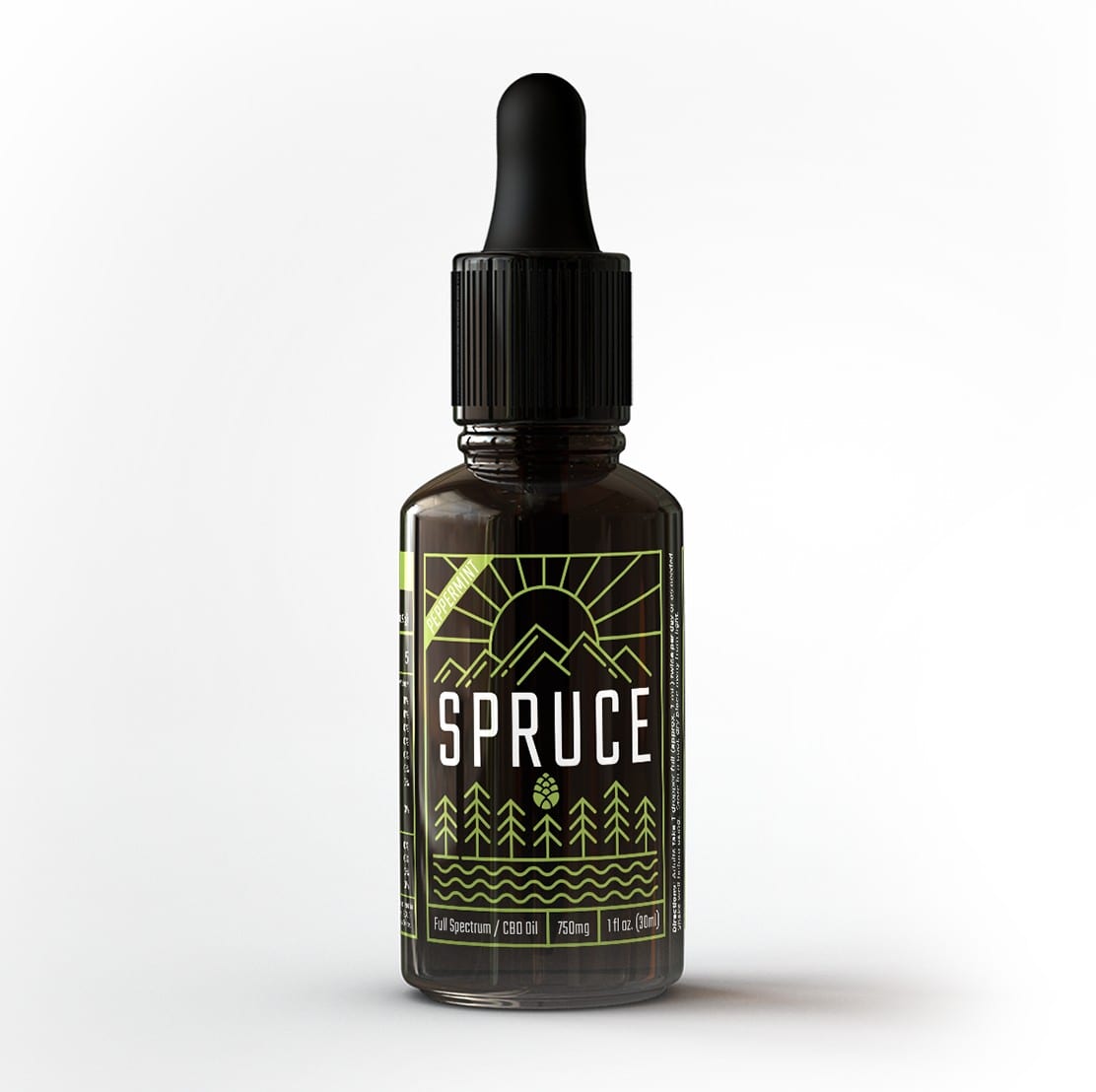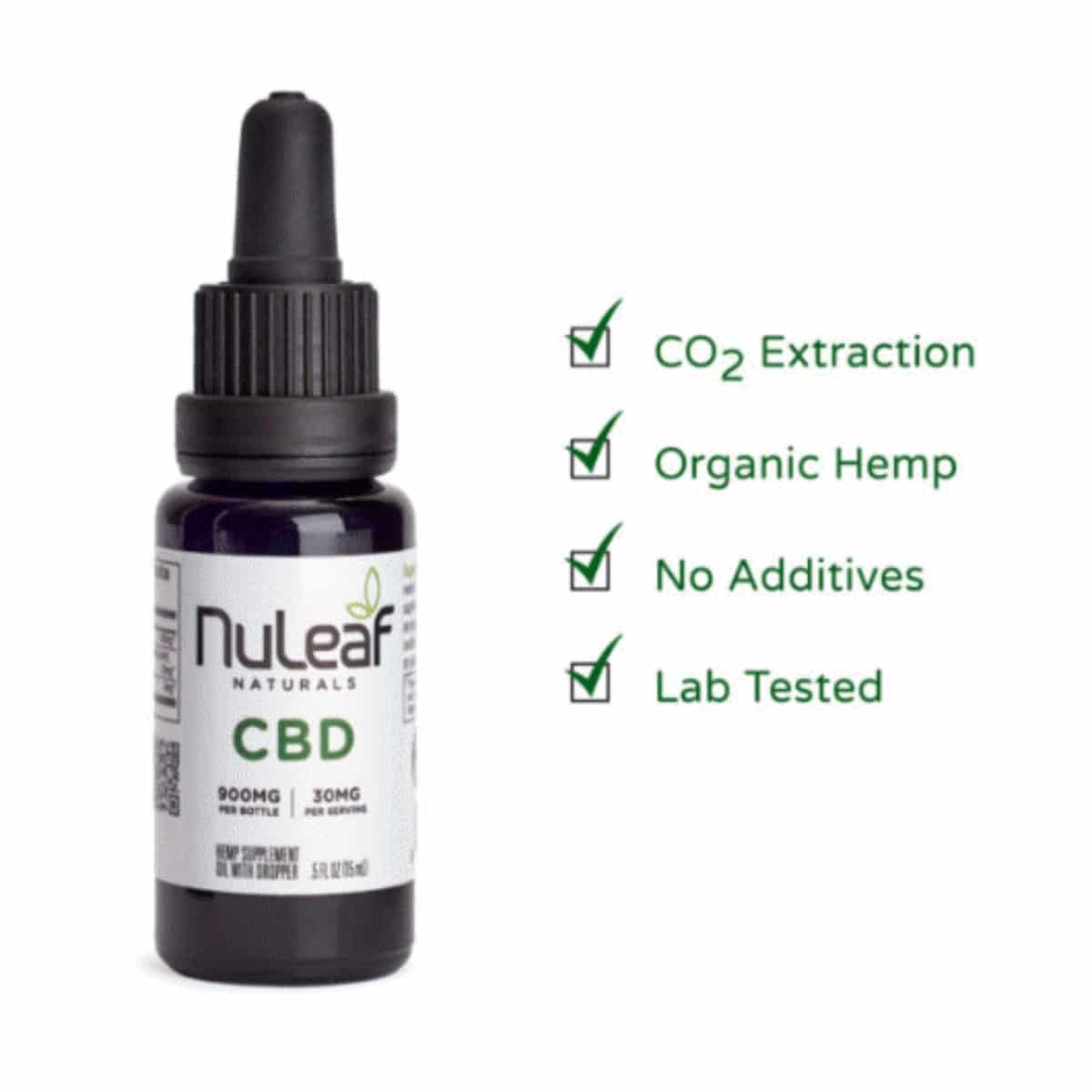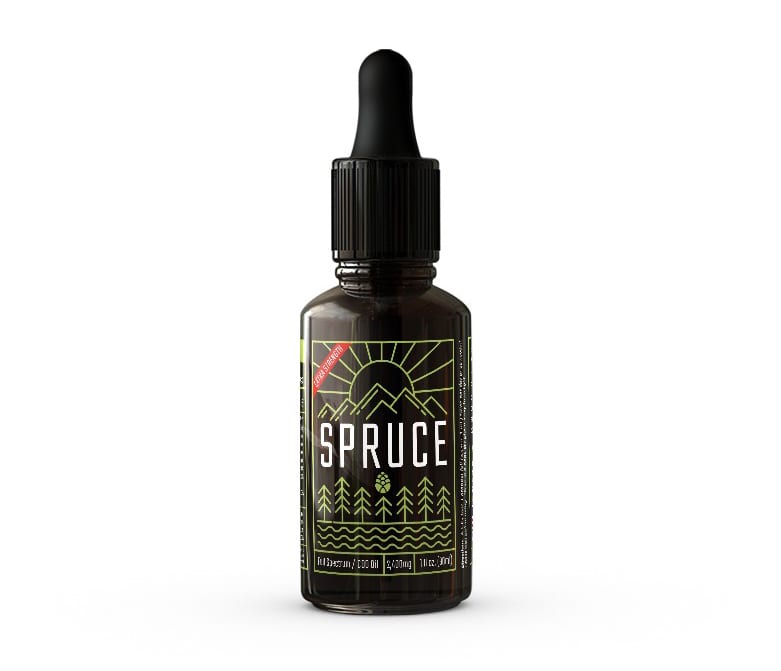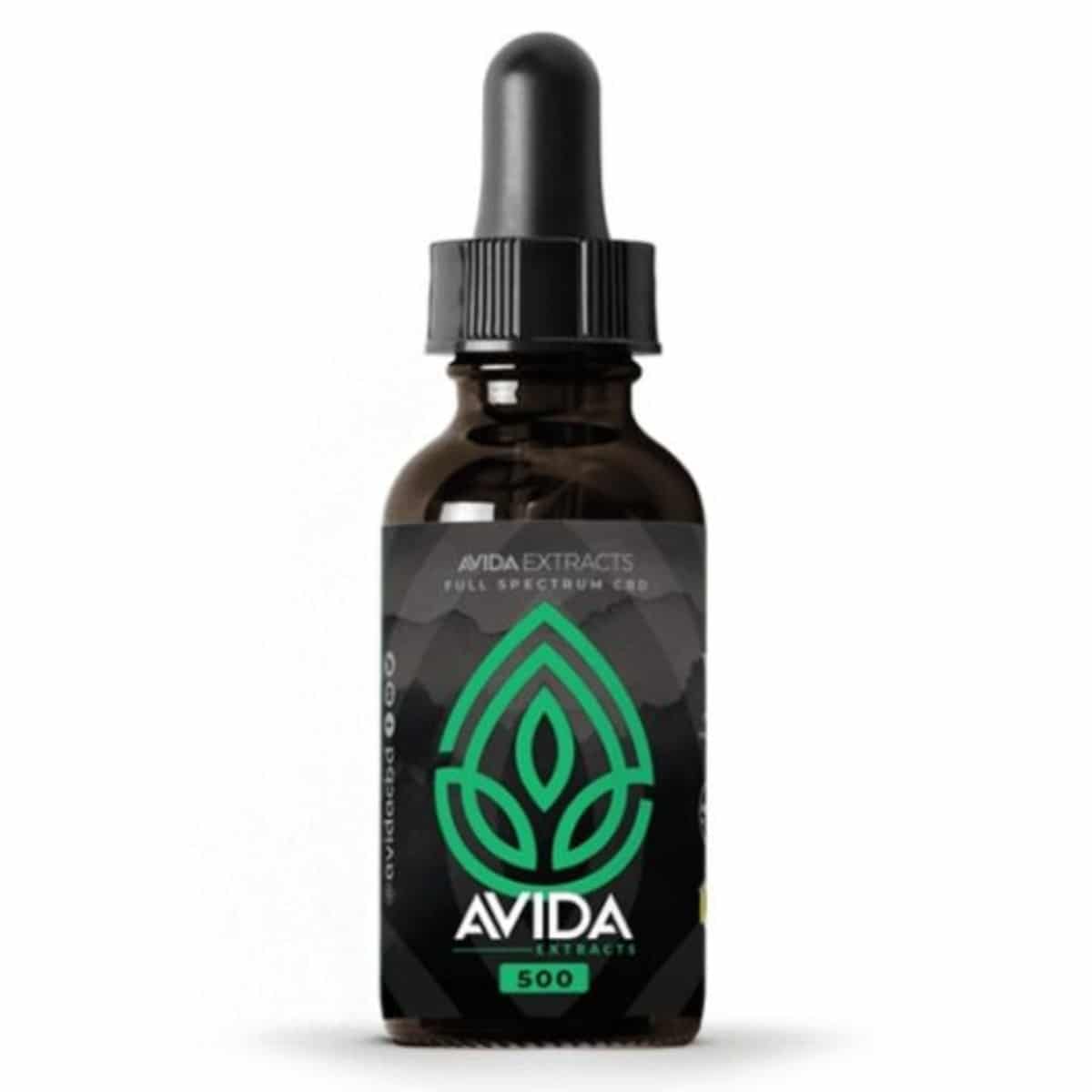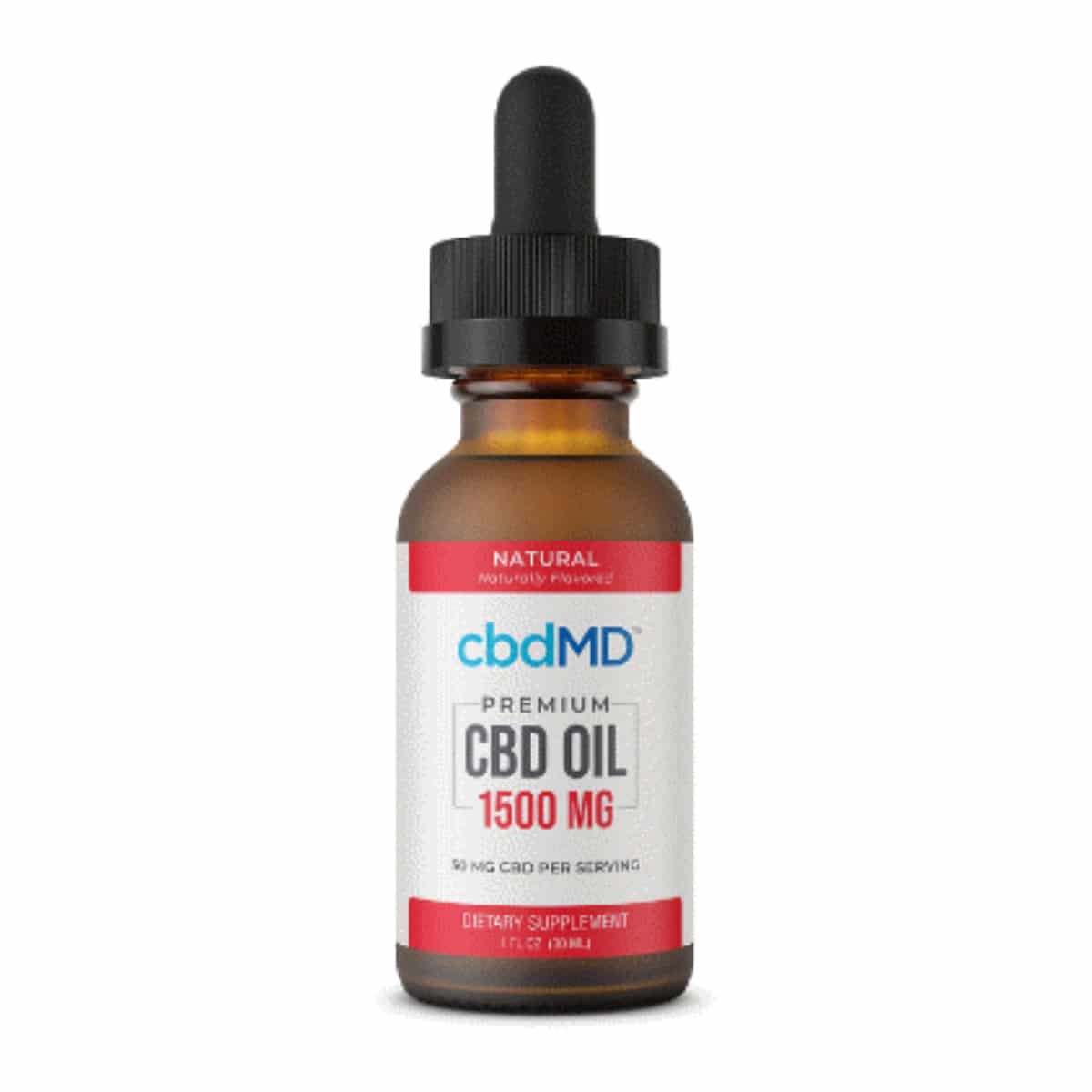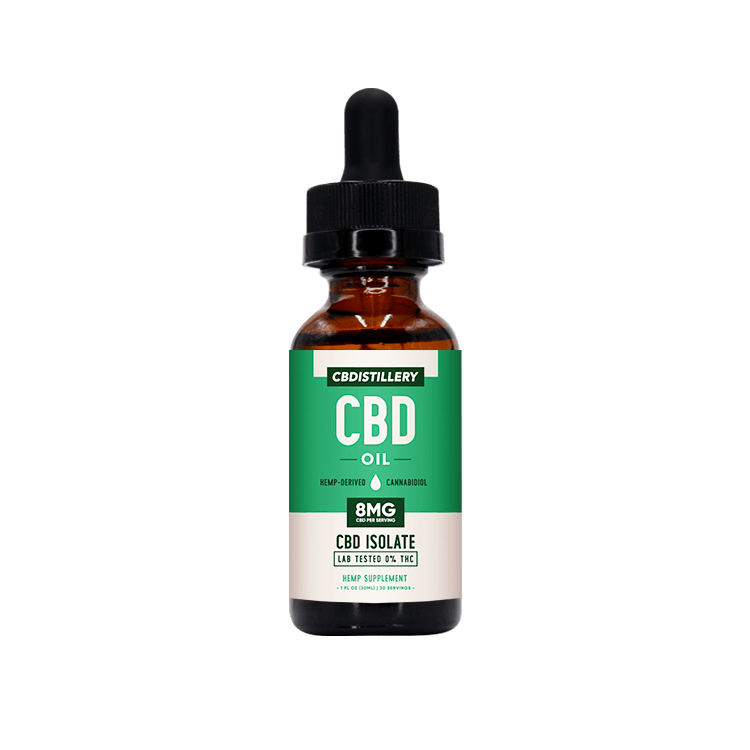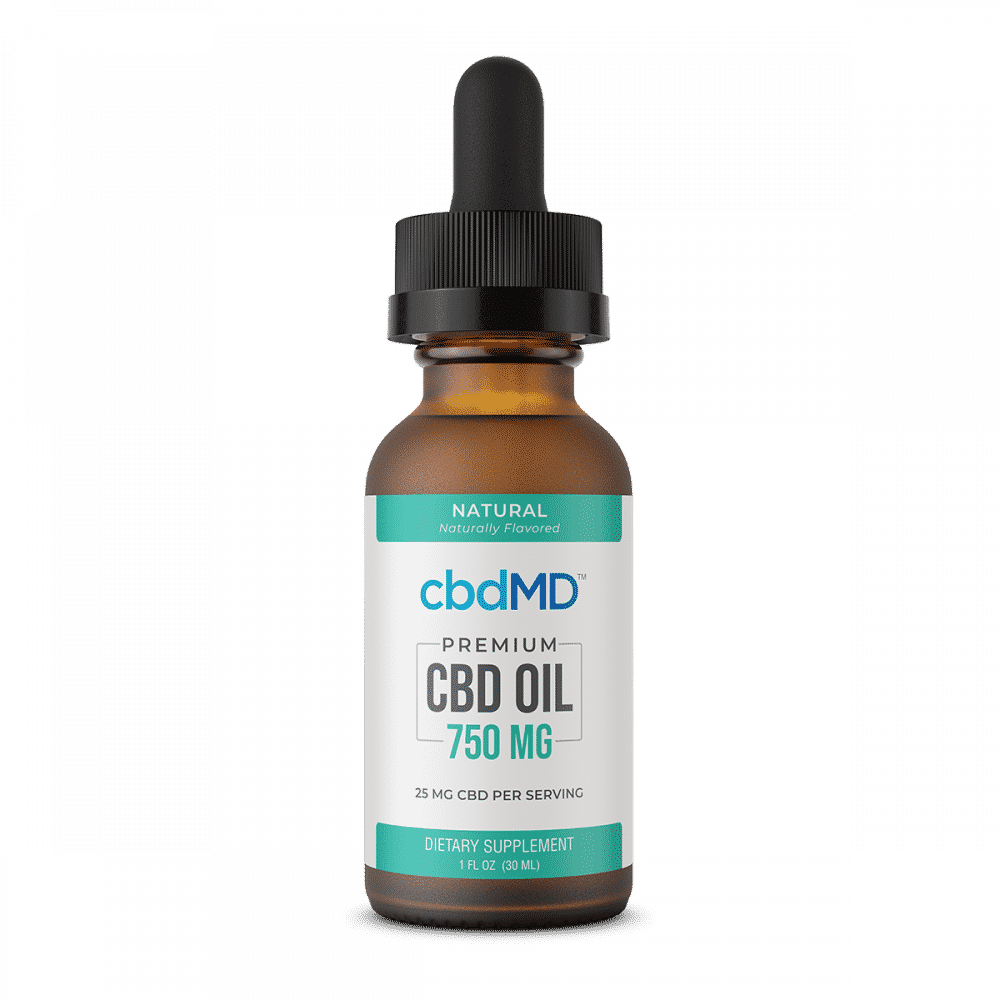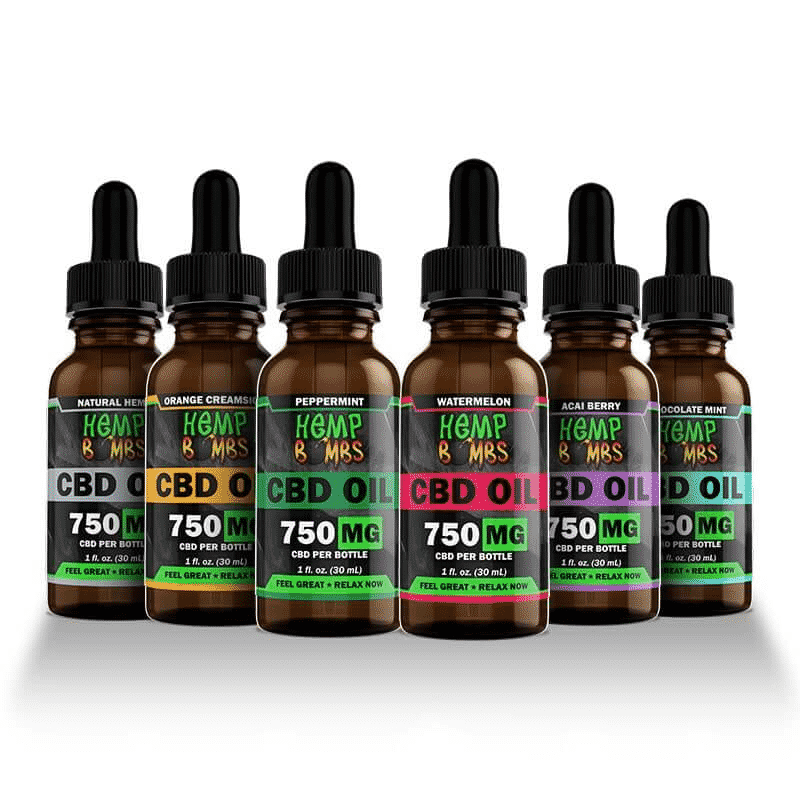Best CBD for Osteoarthritis
If you are among the 54 million arthritic Americans looking for alternative therapeutic measures, you might want to consider some of the best CBD oils (cannabidiol) for osteoarthritis we have listed here.
Best CBD for Osteoarthritis 2025
- Spruce 750mg Lab Grade CBD Oil Editor's Pick
- NuLeaf Naturals 900mg Full Spectrum Hemp CBD Oil Best Organic
- Spruce 2400mg Lab Grade CBD Oil Editor's Pick
- Avida Full Spectrum CBD Oil Tincture 500mg Best Seller
- cbdMD CBD Oil Tincture Natural 1500mg Best Natural Alternative
- CBDistillery THC Free CBD Oil Tinctures Best THC-Free
- cbdMD CBD Oil Tincture Natural 750mg Best Customer Rated
- NuLeaf Naturals 300mg Full Spectrum Hemp CBD Oil Best Starter
- Hemp Bombs 750mg CBD Oil Best Flavor Range
Compare the best CBD for Osteoarthritis in 2022
Best CBD for Osteoarthritis
1. Spruce 750mg Lab Grade CBD Oil
cbdc overall score
4.8
CBDC Evaluation Table/Score
| Pros | Cons |
|---|---|
|
Mid-strength |
No other flavors |
|
Natural peppermint flavor |
|
|
Made from 100% organic and natural ingredients |
Overview
Each bottle of the 750mg CBD oil tincture contains 25mg of CBD per dropper full. The oil is peppermint flavor to mask any unpleasant tastes related to CBD.
2. NuLeaf Naturals 900mg Full Spectrum Hemp CBD Oil
cbdc overall score
5.0
CBDC Evaluation Table/Score
| Pros | Cons |
|---|---|
|
Pure CBD hemp |
No other flavors |
|
All natural |
|
|
Approximately 300 drops total |
Overview
Natural remedy for various illnesses. NuLeaf Naturals’ CBD oil is a whole-plant extract containing a full spectrum of naturally occurring synergistic cannabinoids and terpenes.
3. Spruce 2400mg Lab Grade CBD Oil
cbdc overall score
5.0
CBDC Evaluation Table/Score
| Pros | Cons |
|---|---|
|
Extra Strength |
Tastes bitter |
|
No artificial flavoring or colors |
No THC-free option |
|
Made from 100% organic and natural ingredients |
Overview
The largest bottle of CBD oil that Spruce offers contains 2,400mg of CBD. This is full-spectrum CBD oil, which is the maximum possible potency. Each high potency dropper full contains 80mg of CBD. There are no flavorings in it, which allows for the most CBD to fit in the 30ml bottle.
4. Avida Full Spectrum CBD Oil Tincture 500mg
cbdc overall score
4.6
CBDC Evaluation Table/Score
| Pros | Cons |
|---|---|
|
Light Spearmint flavor |
No other flavor |
|
Non-THC, Non-detected in drug test |
Overview
Avida Extracts Full Spectrum CBD oil is the latest iteration of the brand’s advanced Avida CORE Spectrum technology. They use a proprietary full spectrum blend, resulting in the highest naturally occurring Phyto-cannabinoids and Terpenes with THC (<0.3) to support your health.
5. cbdMD CBD Oil Tincture Natural 1500mg
cbdc overall score
4.7
CBDC Evaluation Table/Score
| Pros | Cons |
|---|---|
|
Various delicious flavors to choose from |
cbdMD uses MCT as its carrier oil so individuals who are allergic with coconuts should consider other brand options |
|
Has vegan, organic, and gluten-free ingredients |
|
|
Free shipping for this particular product within USA |
|
|
World-class customer service team |
Overview
cbdMD’s CBD oil tinctures are made using only CBD sourced from medical hemp and MCT oil as a carrier oil. Tinctures are offered in orange, mint, natural, and berry flavors. Safe for daily use, the oil tinctures are packaged with a built-in rubber dropper to adjust CBD dosage easily. The packaging is made to be easy to transport and discreet to use.
6. CBDistillery THC Free CBD Oil Tinctures
cbdc overall score
4.4
CBDC Evaluation Table/Score
| Pros | Cons |
|---|---|
|
60-Day Satisfaction Guarantee |
Dropper is a bit shaky |
|
Various strengths |
|
|
Oil extracted from aerial plant parts of US grown industrial hemp |
|
|
Sourced from non-GMO industrial hemp grown in the USA through natural farming practices |
Overview
CBDistillery’s Isolate CBD Oil Tinctures harness the power of pure CBD. CBD Isolate Oil Tinctures include 0.0% THC. When you use CBDistillery CBD Isolate Oil Tinctures, you can be assured you’re using the highest quality CBD on the market.
7. NuLeaf Naturals 300mg Full Spectrum Hemp CBD Oil
cbdc overall score
4.6
CBDC Evaluation Table/Score
| Pros | Cons |
|---|---|
|
Pure CBD hemp |
No other flavors |
|
All natural |
A bit pricey compared to competitors |
|
Approximately 100 drops total |
Overview
This is one of several concentrations from NuLeaf Naturals. As the lowest concentration, it is the company’s best option for those new to CBD oil. The product is lab-tested and fully organic. It is full-spectrum, so it contains THC in small quantities.
8. cbdMD CBD Oil Tincture Natural 750mg
cbdc overall score
4.4
CBDC Evaluation Table/Score
| Pros | Cons |
|---|---|
|
Vegan and Gluten free |
Does not ship internationally |
|
Has a third-party lab test |
|
|
Wide variety of CBD strengths and sizes |
Overview
A 750mg bottle of cbdMD’s Broad Spectrum Oil Tincture does not contain THC. It also has a fairly wide flavor range which is perfect for those who prefer other taste. Vegan consumers are considered since cbdMD offers Vegan products. Aside from all of that, another reason why people love cbdMD is because it’s free from harmful chemicals.
9. Hemp Bombs 750mg CBD Oil
cbdc overall score
3.9
CBDC Evaluation Table/Score
| Pros | Cons |
|---|---|
|
Wide variety of flavors |
Incomplete information about the product |
|
Lab test results are complete |
Does not ship to all international countries |
|
30-day money-back guarantee |
Overview
Hemp Bombs offer CBD Oil Tinctures that come in a 30ml bottle containing 750mg of CBD. They provide a wide range of flavors perfect for those that have a knack for sweets. Consumers can safely intake this because it’s free of chemicals and pesticides. Hemp Bombs also offer a 20% off on products upon subscription.
How CBD Helps With Osteoarthritis
It would help if you learned how the endocannabinoid system (ECS) works to understand how CBD works to help with arthritis.
The ECS maintains the state of balance or homeostasis in the body. It allows for proper cell function and enzyme action.
The ECS is responsible for regulating various body functions, including anxiety, sleep, mood, appetite, metabolism, immune response, memory, and pain sensation.
Cannabinoids like CBD have purported therapeutic benefits for such body functions and take effect when they interact with the body’s ECS and its cannabinoid receptors.
The CB1 and CB2 receptors are the ECS’ two central cannabinoid receptors. These receptors connect with the body’s chemical messengers, known as endocannabinoids, prompting the ECS to perform its designated role.
Each receptor plays a particular function and is located in specific parts of the body. The brain primarily contains CB1 receptors associated with cognitive actions related to thinking, memory, mood, coordination, and appetite(1).
Some results from studies focused on the cannabinoid receptors have shown that endocannabinoids attenuate and suppress pain perception(2).
Meanwhile, the immune system responsible for managing the body’s response to pain and inflammation contains most CB2 receptors.
Scientists believe that CBD binds with CB2 receptors as it enters your body. Alternately, it may cause the body to produce natural cannabinoids(3).
By activating CB2 receptors, cannabinoids trigger a response that reduces pain, fights inflammation, and minimizes tissue damage to tissues.
Some research has found that these anti-inflammatory responses are useful in treating health conditions linked to inflammation. These conditions include inflammatory bowel syndrome, chronic inflammatory demyelinating polyneuropathy (CIDP), Crohn’s disease, and arthritis(4).
In 2019, a study published in the journal Current Opinion in Rheumatology found that cannabinoids exhibited anti-inflammatory properties by activating CB2 receptors, which decreased immune cell mobilization and cytokine production(5).
Cytokines are small proteins that various cells in the body release, including the immune system cells that coordinate with the body’s response against disease and infection.
In addition to CBD’s effects through CB1 and CB2 receptors, some evidence suggests that CBD impacts the skin’s TRPV-1(6) and GPR55(7) receptors, which play a role in pain signaling and inflammation.
CBD further interacts with several other receptors in the body, such as the 5-HT1A receptor, which is linked to serotonin. CBD purportedly promotes healing and balance through the interaction with the serotonin neurotransmitters(8).
The Neurochemical Research Journal published research that demonstrated CBD’s potential to inhibit serotonin’s reuptake in the brain, thus boosting serotonin availability for the body(9).
The researchers believe that CBD may help reduce anxiety and stabilize mood with better serotonin regulation.
You may know serotonin as the “feel good” chemical, which influences the various body and psychological functions and impacts anxiety levels, mood, and overall happiness.
A 2012 study in the Translational Psychiatry Journal demonstrated CBD’s capacity to trigger the ECS and produce more of its natural cannabinoids, like anandamide, regulating emotions(10). Results suggested that anandamide levels increased among study volunteers who received CBD.
Based on results from a 2019 animal study published in the Journal of Neuroscience, the increased anandamide levels in the brain reduce behavioral signs of fear or anxiety and protect against the effects of stress(11).
CBD creates a positive effect on reducing body pain and inflammation by affecting how these receptors respond to the signals they receive.
A 2008 study of CBD’s potential action mechanism suggested that CBD may play a role in chronic pain management(12). Meanwhile, a 2016 clinical trial observed that individuals diagnosed with osteoarthritis, rheumatoid arthritis, and fibromyalgia may experience reduced pain and improved sleep with CBD(13).
While the trial’s researchers reported no adverse side effects and believe that CBD was effective and safe in overall pain management, more longitudinal research on the purported benefits of CBD on osteoarthritis is needed to substantiate the compound’s pain-relieving characteristics.
Benefits of Using CBD Oil for Osteoarthritis
CBD shows potential as an anti-inflammatory agent(14). Researchers’ results indicate that CBD may protect the nerves and prevent osteoarthritis and joint pain(15).
Additionally, multiple animal-based studies have suggested that CBD helps reduce pain, inflammation, and nerve damage linked to arthritis(16).
Meanwhile, the Arthritis Foundation says that companies promote several herbal remedies for treating arthritis, including Boswellia serrata, devil’s claw, turmeric, ginger, willow bark extract, and feverfew(17).
Some herbal remedies may come in the form of a gel, cream, patch, or compress to rub on or apply to the skin.
Preliminary research showed that CBD may help treat arthritis-related conditions. A 2006 clinical study of a drug mixed with tetrahydrocannabinol (THC) and CBD reported an improvement of pain caused by rheumatoid arthritis(18).
In 2017, a published study analyzed whether CBD could prevent osteoarthritis pain and joint neuropathy(19). According to the researchers’ findings, CBD may help decrease joint inflammation and serve as a protectant to the nerves.
Furthermore, the Arthritis Foundation’s survey reported promising results, with 75% of arthritis-sufferers saying CBD products improved their arthritis symptoms.
Animal studies have also backed the claims on CBD’s anti-inflammatory properties. For example, multiple studies in rats and mice have suggested that CBD helps reduce pain, inflammation, and nerve damage associated with arthritis(20).
Approximately 23% of all adults or more than 54 million people in the United States have arthritis(21). The Arthritis Foundation explains that arthritis is the primary cause of work disability.
Osteoarthritis is among the most common types of arthritis. This form of arthritis occurs when the protective cartilage that supports the bones’ ends deteriorates over time.
Although osteoarthritis can affect any joint, it tends to affect the hands, knees, hips, and spine, which are the most active joints in the body that bear the most stress.
Risks of Using CBD Oil for Osteoarthritis
The World Health Organization (WHO) has shown approval for CBD, saying it is “generally well-tolerated with a good safety profile(22).”
Still, the United States Food and Drug Administration (FDA) does not approve marketing CBD oil as dietary supplements or medicine for any condition(23).
The FDA ensures the safety, efficacy, and security of human and animal drugs to protect public health(24).
There is minimal evidence to support CBD’s claim as a viable treatment for any debilitating conditions, despite the promising results from existing studies.
CBD has significant scientific backing to treat seizures associated with Dravet syndrome or Lennox-Gastaut syndrome in child patients over one year of age.
The FDA has only approved Epidiolex as a CBD treatment for children with seizures caused by rare forms of epilepsy. Epidiolex is the first and only FDA-approved narcotic containing a purified drug substance derived from marijuana plants(25).
Using CBD for osteoarthritis may induce side effects, including changes in appetite, fatigue, diarrhea, nausea, and drowsiness(26).
CBD may also interact with certain medications or supplements that an individual is taking(27).
How Soon Does It Take to Feel the Effects of CBD for Osteoarthritis?
The time it takes for CBD to take effect will depend on how you use CBD for osteoarthritis.
You can take CBD-based products orally, apply them to your skin directly, or inhale CBD vape juices. Each mode of administration has its advantages and disadvantages for individuals with arthritis.
Taking CBD by Mouth
When you take CBD orally, you might ingest or swallow it in the form of food, drink, capsules, or gummies. These are straightforward ways to take CBD oil, especially if you are a beginner.
CBD oil in these forms goes through the digestive tract for absorption. This administration method can be tricky because of some factors, including slow absorption, which leads to delayed onset of effect (one to two hours).
Such factors make dosing equally complicated because of unknown stomach acids and recent meals.
While capsules, edibles, gummies, or CBD-infused cookies can be a convenient option to avoid the unpleasant flavor of natural CBD oil, there is no standard amount for an adequate dosage, making such methods unreliable.
Alternatively, you can absorb CBD directly into your bloodstream by holding the liquid from a spray or tincture (a fluid that you dose by a dropper) sublingually for 60 to 120 seconds.
While the natural flavor of CBD oil is unpleasant, the effects of CBD will kick in within 15 to 45 minutes and may last for four to six hours(28).
If you value quick results and maximum dosage control, CBD oil tinctures or drops may be the practical option.
CBD oil tincture products typically come with marked droppers so you can quickly produce accurate dosing. Syringes may also help you control the number of drops you apply for consistent dosing.
Topical CBD Application
Topical products include CBD creams, CBD transdermal patches, or CBD massage oils. These are ideal when dealing with pain or inflammation in a specific area of your body.
When you apply CBD this way, the CBD can avoid interacting with the ECS as a whole. Instead, it targets localized clusters of cannabinoid receptors.
The CBD topical creams may work instantly after rubbing the product onto the affected area. Ideally, you can feel relief in about 15 minutes(29). One option is to apply CBD oil alone topically or combine the product with cream or lotion(30).
When you decide to pursue topical products, be sure to look for keywords that indicate that a CBD product’s solution can carry CBD through the dermal layers rather than stay on your skin.
Such topical product labels would indicate that it uses nanotechnology, encapsulation, or CBD micellization.
Some companies may infuse their topical CBD patches, creams, salves, and massage oils with essential oils that may supplement CBD’s health benefits for arthritis pain relief.
Meanwhile, topical products might include other common over-the-counter active ingredients, such as menthol, camphor, or capsaicin. As such, determining whether the pain relief is due to CBD or another component is difficult.
Inhaling CBD
You can use a vape pen to inhale CBD vape juices. CBD oil vapes are among the quickest ways to get CBD into your body.
Through this method, you would inhale CBD vapors, making CBD enter your bloodstream through your lungs without going through your digestive system.
Through vaping, you can feel CBD’s effects in minutes. The results may keep you steady between three to five hours after inhalation(31).
However, determining the precise amount of CBD you get in each draw with CBD vapes is difficult.
A 2018 study published in Molecules indicated that the primary limitations of inhaling are the variability in one’s inhalation techniques and respiratory tract irritation upon inhalation(32).
Although the labels for CBD oil vape products usually indicate the amount of CBD you receive per inhale, this amount may vary between persons. You may have to perform a bit of experimentation in the beginning before getting the right dosage.
Vaping might not work for everyone. Experts are unsure whether or not vaping causes lung problems. However, they believe that contaminants, instead of an infectious agent, are the most likely culprit in causing lung issues.
Potential adverse effects from vaping include chemical irritation or immune or allergic reactions to various chemicals or other foreign substances in the inhaled vapors(33).
For people with inflammatory arthritis, the inhalation of vapor oils and chemical byproducts might carry unknown risks.
The Centers for Disease Control and Prevention (CDC) investigates vaping in association with widespread hospitalizations and deaths from severe pulmonary disease(34).
You must proceed with caution when contemplating vaping CBD for the first time and consult with a doctor experienced in CBD use.
How to Choose CBD for Osteoarthritis
With the different methods of administering CBD for arthritis, it is important to know the different CBD oil types that products may contain. There are three main types of CBD products: full-spectrum CBD oil, broad-spectrum CBD oil, and CBD isolates.
Full-spectrum CBD oil contains a complete range of cannabinoids, terpenes, flavonoids, and other compounds naturally occurring in cannabis plants. Compounds also include a variety of fatty acids and minerals, such as beneficial fiber.
Terpenes are the compounds in cannabis plants responsible for their distinctive flavors and aromas, while flavonoids give most plants their vivid colors.
The combination of these components creates a synergy known as the “entourage effect.” This effect involves all of the plant’s constituents working together to achieve more efficient results than its isolated elements(35).
With full-spectrum CBD oil, you could utilize the potential therapeutic benefits of other cannabinoids besides CBD.
Still, it is up to your physician’s discretion whether to suggest trying full-spectrum formulations. Currently, there is no research available on full-spectrum CBD’s efficacy and safety outside of specific components in separate contexts(36).
Broad-spectrum is another type of CBD that you can choose if you have allergies to THC. This formulation is similar to full-spectrum CBD, save for it being THC-free.
Meanwhile, CBD isolates contain only pure CBD. You may be allergic to other components of hemp plants besides THC, making chemically isolated CBD an ideal product if you are after CBD’s potential benefits.
Regardless of CBD products’ formulation, you must make careful considerations before selecting the best CBD oil suitable for your preferences and lifestyle.
The following factors are necessary to ensure the reliability and safety of the CBD products that you purchase:
- Conduct background research on the specific legal stipulations applicable to CBD in the state you intend to purchase.
- Lookup a CBD brand and confirm whether they prove that they sell only non-GMO, organic hemp-derived CBD oil products.
Most CBD companies that manufacture the best CBD oil products use locally grown hemp from their farms or purchase hemp extracts from local and licensed hemp producers, which usually come from Colorado. - Check the customer reviews of a brand’s best CBD products to see if real people can confirm that a brand is reliable and offers high-quality products.
- Read product reviews before you buy from an online store. When you purchase from a physical store or dispensary, check whether the local government authorized the store to sell CBD.
- Learn the extraction methods that a CBD brand uses to make their CBD oil products.
Researchers of a 2018 study indicated that the US Food and Drug Administration (FDA) recognizes the supercritical CO2 extraction method as safe in pharmaceutical manufacturing(37).
The supercritical CO2 extraction process allows for the highest potency and purity because the process does not include any unwanted ingredients and impurities upon hemp extraction. - Look for certification codes of a CBD product.
It is essential to confirm if a brand has undergone the necessary clearances from several certification authorities. These bodies approve certain products only after some thorough screening tests. - Compare the third-party lab testing reports of CBD products against company claims about their products’ potency. Look for a certificate of analysis for any product that you purchase.
A product’s certificate of analysis (COA) contains third-party testing results and lists its complete contents.
When it comes to CBD, a COA includes a product’s cannabinoid content and other tested compounds, such as heavy metals, pesticides, molds, and residual solvents.
COAs are lab results for you to determine the contents of the product you are purchasing.
COAs are vital pieces of information that promote transparency and ensure that the product contains what it claims. A reputable CBD company always proves that its products have passed necessary lab testing with their most recent COAs.
Besides a product’s COA, you may also look for a certificate from the US Hemp Authority Certification, which is the CBD industry’s initiative that provides high standards, self-regulation, and best practices. - Consult with a medical professional whom you trust before using any CBD product. It is better if your trusted medical practitioner has experience in the use of CBD.
- Consider high-quality products that are CBD-rich, derived from high-resin cannabis, and have undergone sustainable growth practices with certified regenerative organic standards.
- Beware of CBD brands that make exaggerated claims about their CBD products.
- Avoid CBD hemp oil vape cartridges that contain toxic thinning agents (such as propylene glycol and polyethylene glycol), flavor additives, and other harmful ingredients.
- Avoid poor quality CBD-infused gummies made with corn syrup and artificial colors.
- Directly reach out to CBD companies for your questions. If a brand avoids answering your inquiries, try another brand that communicates well with its potential customers.
CBD Dosage for Osteoarthritis
There are no official clinical guidelines on dosing with CBD for osteoarthritis treatment. However, the Arthritis Foundation consulted with medical experts who recommend the following dosing guidelines for adults with arthritis pain(38):
- Understand that manufacturers mix CBD extracts with a carrier oil. When taking CBD oil or tincture, determine the amount of oil or tincture to take (the dose) and CBD amount in each dose.
- Start low and slow. Begin with a few mg of CBD through the sublingual method (under the tongue) twice a day. If you feel inadequate relief after one week, double your dosage.
If necessary, gradually increase the dose in several weeks. Once you achieve your desired level of relief, continue taking that dose twice a day to maintain a stable CBD level in your blood. - When using full-spectrum CBD oil, note that even low THC levels may accumulate and get you high, creating motor, cognitive, and balance issues.
- If you do not feel relief from arthritis even after several weeks of using CBD of any type, or if you experience any unwanted side effects when using a CBD product, immediately discontinue use and inform your doctor(39).
Legality of CBD
Currently, only 47 out of the 50 United States of America allow the use of CBD with varying degrees of regulation per state(40). With federal laws in place, you can travel between states with similar restrictions on CBD possession.
You would typically associate CBD’s legality with the 2018 Farm Bill or the Agriculture Improvement Act of 2018 in the US(41). This law redefined hemp plants to differentiate them from marijuana plants.
With hemp plants’ declassification as marijuana plants, the 1970 Federal Controlled Substances Act no longer covers them in its Schedule I category(42).
Both industrial hemp and marijuana plants belonged in the Schedule I category before Congress passed the 2018 Farm Bill. Schedule I drugs consist of potentially abusive or addictive substances that have no officially recognized health benefits.
Cannabis sativa plants may come in hemp and marijuana varieties. The 2018 Farm Bill made a distinction between the two varieties by defining hemp plants as cannabis plants that contain less than 0.3% THC on a dry weight basis.
Meanwhile, marijuana plants are cannabis plants with more than the established limit.
Besides the redefinition of hemp plants based on their THC content, the 2018 Farm Bill granted the FDA permission to regulate CBD’s circulation in the market(43). This agency may penalize CBD companies that make unproven health claims about CBD products’ health benefits.
Cannabis plants have many components, from fatty acids, flavonoids, terpenes, and cannabinoids. CBD and THC are among the most abundant cannabinoids within cannabis plants, meaning both compounds are present in both hemp and marijuana.
The varying THC concentrations imply that CBD oil derived from a particular plant does not make its users feel any psychoactive effects.
THC’s psychoactive properties make people experience euphoria or “getting high,” a critical player in CBD products’ legality.
CBD oil within the legal limit of 0.3% THC by dry weight does not produce a “high” effect, while its users still benefit from the purported benefits of cannabis plants.
Marijuana contains more than 0.3% THC, so it remains in the Schedule I category of drugs with a high potential for abuse(44). As such, marijuana-derived CBD oil products are federally illegal in the US.
Only qualified patients who have explicit permission from a licensed healthcare provider can buy CBD oil that exceeds the federal THC limit. Such products are also known as medical marijuana, which you may obtain by seeking a medical marijuana card.
There are varying application rules for obtaining a medical marijuana card, which depend on your state of residence.
Likewise, people have varying degrees of access to CBD products low in THC and high in CBD, depending on their home state. A state may specify its conditions surrounding CBD usage through its local laws.
While the 2018 Farm Bill removed legal restrictions from producing, manufacturing, and owning hemp-derived CBD products, local laws may supersede the federal law since state laws are the primary enforcement authority in drug-related offenses(45).
Product Frequently
Asked Questions
-
How can CBD help with osteoarthritis?
CBD activates your body’s CB2 receptors, so you benefit from CBD’s purported analgesic and anti-inflammatory properties(46).
-
What evidence or research exists to say that CBD helps with osteoarthritis?
Some research considers the anti-inflammatory responses between cannabinoid receptors and CBD useful in treating health conditions linked to inflammation. These conditions include inflammatory bowel syndrome, chronic inflammatory demyelinating polyneuropathy (CIDP), Crohn’s disease, and arthritis(47).
-
Is there any evidence that CBD can worsen osteoarthritis?
While there is no specific evidence that links CBD to worsening osteoarthritis, CBD has reportedly caused side effects that are symptoms of inflammatory arthritis, such as nausea(48).
-
Can CBD interact with any current medication that I may be taking for osteoarthritis?
Although potential interactions with arthritis-specific medications are undocumented, CBD usage carries the risk of interacting with certain drugs or supplements that you might be taking(49).
-
Are there other treatments I should consider alongside CBD to help with osteoarthritis?
You may consider massage therapy along with topical CBD treatment, as a 1997 study noted the benefits of massage therapy on rheumatoid arthritis (50).
No research explicitly confirms the combined effects of massage therapy and CBD for osteoarthritis treatment. However, CBD shows promise in alleviating pain and inflammation(51).
-
Can I fail a drug test if I use CBD for osteoarthritis?
If you take CBD for osteoarthritis, you may only fail a drug test if the CBD products you use contain more THC than the approved limit of 0.3%. CBD does not show up on a drug test, unlike THC.
Note that the volume of THC you consume may accumulate with frequent use, which may end up enough to be detected on a drug test(52). Thus, it would be best to be cautious when taking CBD products with THC, especially when you have a scheduled drug test.
-
What is the CBD dosage for osteoarthritis?
There are no official clinical guidelines on dosing with CBD for osteoarthritis treatment. However, in collaboration with the Arthritis Foundation, medical experts recommend that adults with arthritis pain start with a low dose and gradually increase it until the desired relief is achieved(53).
-
Do I need a doctor’s prescription or recommendation if I want to buy CBD oil for arthritis?
Purchasing CBD oil for any medical condition will depend on the state where you reside. Only 36 states and DC have legalized medical marijuana. The remaining 14 states have all passed laws allowing CBD usage(54).
-
Is CBD the same as marijuana?
No, CBD is a cannabinoid, while marijuana is a plant. Marijuana may contain CBD, as the cannabinoid is present in cannabis plants.
CBD is the second most present component of cannabis, the first being THC or tetrahydrocannabinol. THC is the component of cannabis plants that makes you feel “high.” CBD does not get you “high.”
- ECHO. (2017, April 18). Retrieved from https://echoconnection.org/look-endocannabinoid-systems-cb1-cb2-receptors/.
- Ledent C, Valverde O, Cossu G, Petitet F, Aubert JF, Beslot F, et al. Unresponsiveness to cannabinoids and reduced addictive effects of opiates in CB1 receptor knockout mice. Science. 1999;283:401–4. https://doi.org/10.1126/science.283.5400.401.
- Philpott, H. T., O’Brien, M., & McDougall, J. J. (2017). Attenuation of early phase inflammation by cannabidiol prevents pain and nerve damage in rat osteoarthritis. Pain, 158(12), 2442. https://pubmed.ncbi.nlm.nih.gov/28885454/
- Turcotte C, Blanchet MR, Laviolette M, Flamand N. The CB2 receptor and its role as a regulator of inflammation. Cell Mol Life Sci. 2016;73(23):4449–4470. DOI:10.1007/s00018-016-2300-4.
- Lowin T, Schneider M, Pongratz G. Joints for joints: cannabinoids in the treatment of rheumatoid arthritis. Curr Opin Rheumatol. 2019;31(3):271–278. DOI:10.1097/BOR.0000000000000590.
- Sharir H, Abood ME. Pharmacological characterization of GPR55, a putative cannabinoid receptor. Pharmacol Ther. 2010;126(3):301–313. DOI:10.1016/j.pharmthera.2010.02.004.
- Costa B, Giagnoni G, Franke C, Trovato AE, Colleoni M. Vanilloid TRPV1 receptor mediates the antihyperalgesic effect of the nonpsychoactive cannabinoid, cannabidiol, in a rat model of acute inflammation. Br J Pharmacol. 2004;143(2):247–250. DOI:10.1038/sj.bjp.0705920.
- ECHO. (2017, March 29). Retrieved from https://echoconnection.org/differences-cbd-thc/.
- Russo, E.B., Burnett, A., Hall, B. et al. Agonistic Properties of Cannabidiol at 5-HT1a Receptors. Neurochem Res 30, 1037–1043 (2005). https://doi.org/10.1007/s11064-005-6978-1.
- Leweke FM, Piomelli D, Pahlisch F, et al. Cannabidiol enhances anandamide signaling and alleviates psychotic symptoms of schizophrenia. Transl Psychiatry. 2012;2(3):e94. Published 2012 Mar 20. DOI:10.1038/tp.2012.15.
- Morena M., Aukema, R., […], and Hill M. Upregulation of Anandamide Hydrolysis in the Basolateral Complex of Amygdala Reduces Fear Memory Expression and Indices of Stress and Anxiety. Journal of Neuroscience 13 February 2019, 39 (7) 1275-1292; DOI: https://doi.org/10.1523/JNEUROSCI.2251-18.2018.
- Russo, E. B. (2008). Cannabinoids in the management of difficult to treat pain. Therapeutics and clinical risk management, 4(1), 245. https://www.ncbi.nlm.nih.gov/pmc/articles/PMC2503660/
- Vučković, S., Srebro, D., Vujović, K. S., Vučetić, Č., & Prostran, M. (2018). Cannabinoids and pain: new insights from old molecules. Frontiers in pharmacology, 9, 1259. https://www.ncbi.nlm.nih.gov/pmc/articles/PMC6277878/
- Misawa, K., Takeda S., Watanabe, K., & Yamamoto, I. (2008). Cannabidiolic acid as a selective cyclooxygenase-2 inhibitory component in cannabis. https://pubmed.ncbi.nlm.nih.gov/18556441/
- Misawa, K., Takeda S., Watanabe, K., & Yamamoto, I. (2008). Cannabidiolic acid as a selective cyclooxygenase-2 inhibitory component in cannabis. https://pubmed.ncbi.nlm.nih.gov/18556441/
- Misawa, K., Takeda S., Watanabe, K., & Yamamoto, I. (2008). Cannabidiolic acid as a selective cyclooxygenase-2 inhibitory component in cannabis. https://pubmed.ncbi.nlm.nih.gov/18556441/
- Arthritis Foundation. 5 Ways to Take Herbs and Supplements for Arthritis. Retrieved from https://www.arthritis.org/health-wellness/treatment/complementary-therapies/supplements-and-vitamins/5-ways-to-take-herbs-and-supplements-for-arthritis.
- Blake, D. R., Robson, P., Ho, M., Jubb, R. W., & McCabe, C. S. (2006). Preliminary assessment of the efficacy, tolerability, and safety of a cannabis-based medicine (Sativex) in the treatment of pain caused by rheumatoid arthritis. Rheumatology, 45(1), 50-52. https://pubmed.ncbi.nlm.nih.gov/16282192/
- Philpott, H. T., O’Brien, M., & McDougall, J. J. (2017). Attenuation of early phase inflammation by cannabidiol prevents pain and nerve damage in rat osteoarthritis. Pain, 158(12), 2442. https://pubmed.ncbi.nlm.nih.gov/28885454/
- Ibid.
- CDC.gov (2019). How CDC Improves Quality of Life for People With Arthritis. National Center for Chronic Disease Prevention and Health Promotion (NCCDPHP). https://www.cdc.gov/chronicdisease/resources/publications/factsheets/arthritis.htm
- WHO. Expert Committee on Drug Dependence. (2017, Nov 6-10). Cannabidiol (CBD). Retrieved from https://www.who.int/medicines/access/controlled-substances/5.2_CBD.pdf
- FDA Regulation of Cannabis and Cannabis-Derived Products, Including Cannabidiol (CBD). U.S. Food & Drug Administration. 2020 October 1. Retrieved from https://www.fda.gov/news-events/public-health-focus/fda-regulation-cannabis-and-cannabis-derived-products-including-cannabidiol-cbd
- What We Do. U.S. Food & Drug Administration. 2018 March 28. Retrieved from https://www.fda.gov/about-fda/what-we-do
- FDA Approves First Drug Comprised of an Active Ingredient Derived from Marijuana to Treat Rare, Severe Forms of Epilepsy. U.S. Food & Drug Administration. 2020 March 27. Retrieved from https://www.fda.gov/news-events/press-announcements/fda-approves-first-drug-comprised-active-ingredient-derived-marijuana-treat-rare-severe-forms
- Machado Bergamaschi, M., Helena Costa Queiroz, R., Waldo Zuardi, A., & Crippa, A. S. (2011). Safety and side effects of cannabidiol, a Cannabis sativa constituent. Current drug safety, 6(4), 237-249.
- Schmerling, R. (2020). Does CBD help with arthritis pain? Harvard Health Publishing. https://www.health.harvard.edu/blog/does-cbd-help-with-arthritis-pain-2020041019418
- Arthritis Foundation. CBD for Arthritis Pain: What You Should Know. Retrieved from https://www.arthritis.org/health-wellness/healthy-living/managing-pain/pain-relief-solutions/cbd-for-arthritis-pain.
- Taskar, P., Adelli, G., Patil, A., Lakhani, P., Ashour, E., Gul, W., ElSohly, M., & Majumdar, S. (2019). Analog Derivatization of Cannabidiol for Improved Ocular Permeation. Journal of ocular pharmacology and therapeutics : the official journal of the Association for Ocular Pharmacology and Therapeutics, 35(5), 301–310. https://doi.org/10.1089/jop.2018.0141
- Freeman, J. (2019, Oct 4). Does CBD Oil Really Help Treat Arthritis Pain? Retrieved from https://www.rheumatoidarthritis.org/cbd-oil/.
- Bruni, N., Della Pepa, C., Oliaro-Bosso, S., Pessione, E., Gastaldi, D., & Dosio, F. (2018). Cannabinoid Delivery Systems for Pain and Inflammation Treatment. Molecules (Basel, Switzerland), 23(10), 2478. https://doi.org/10.3390/molecules23102478
- Bruni N, Della Pepa C, Oliaro-Bosso S, Pessione E, Gastaldi D, Dosio F. Cannabinoid Delivery Systems for Pain and Inflammation Treatment. Molecules. 2018;23(10):2478. Published 2018 Sep 27. DOI:10.3390/molecules23102478.
- Shmerling, R. (2019, Dec 10). Can vaping damage your lungs? What we do (and don’t) know. https://www.health.harvard.edu/blog/can-vaping-damage-your-lungs-what-we-do-and-dont-know-2019090417734.
- Arthritis Foundation. op.cit.
- Russo EB. The Case for the Entourage Effect and Conventional Breeding of Clinical Cannabis: No “Strain,” No Gain. Front Plant Sci. 2019;9:1969. Published 2019 Jan 9. DOI:10.3389/fpls.2018.01969.
- VanDolah HJ, Bauer BA, Mauck KF. Clinicians’ Guide to Cannabidiol and Hemp Oils. Mayo Clin Proc. 2019;94(9):1840–1851. DOI:10.1016/j.mayocp.2019.01.003.
- Kankala RK, Chen BQ, Liu CG, Tang HX, Wang SB, Chen AZ. Solution-enhanced dispersion by supercritical fluids: an ecofriendly nanonization approach for processing biomaterials and pharmaceutical compounds. Int J Nanomedicine. 2018;13:4227–4245. Published 2018 Jul 23. DOIi:10.2147/IJN.S166124; Djerafi R, Masmoudi Y, Crampon C, Meniai A, Badens E. Supercritical anti-solvent precipitation of ethyl cellulose. J Supercrit Fluids. 2015;105:92–98.
- Arthritis Foundation. CBD for Arthritis Pain: What You Should Know. Retrieved from https://www.arthritis.org/health-wellness/healthy-living/managing-pain/pain-relief-solutions/cbd-for-arthritis-pain.
- Ibid.
- Hemppedia (2019, May 31). Is CBD legal in all 50 states? – The complete 2020 Guide Retrieved from https://hemppedia.org/cbd-oil-legal-us/
- Farm Bill. U.S. Department of Agriculture. Retrieved from https://www.usda.gov/farmbill
- Comprehensive Drug Abuse Prevention and Control Act of 1970. FindLaw. 2019 February 4. Retrieved from https://criminal.findlaw.com/criminal-charges/comprehensive-drug-abuse-prevention-and-control-act-of-1970.htm
- Hudak, John. The Farm Bill, hemp legalization and the status of CBD: An explainer. The Brookings Institution. 2018 December 14. Retrieved from https://www.brookings.edu/blog/fixgov/2018/12/14/the-farm-bill-hemp-and-cbd-explainer/
- FDA Regulation of Cannabis and Cannabis-Derived Products, Including Cannabidiol (CBD). U.S. Food & Drug Administration. 2020 October 1. Retrieved from https://www.fda.gov/news-events/public-health-focus/fda-regulation-cannabis-and-cannabis-derived-products-including-cannabidiol-cbd
- Mead A. (2019). Legal and Regulatory Issues Governing Cannabis and Cannabis-Derived Products in the United States. Frontiers in plant science, 10, 697. https://doi.org/10.3389/fpls.2019.00697
- Turcotte C, Blanchet MR, Laviolette M, Flamand N. The CB2 receptor and its role as a regulator of inflammation. Cell Mol Life Sci. 2016;73(23):4449–4470. DOI:10.1007/s00018-016-2300-4.
- Ibid
- Machado Bergamaschi, M., Helena Costa Queiroz, R., Waldo Zuardi, A., & Crippa, A. S. (2011). Safety and side effects of cannabidiol, a Cannabis sativa constituent. Current drug safety, 6(4), 237-249.
- Schmerling, R. (2020). Does CBD help with arthritis pain? Harvard Health Publishing. https://www.health.harvard.edu/blog/does-cbd-help-with-arthritis-pain-2020041019418
- Field, T., Hernandez-Reif, M., Seligman, S., Krasnegor, J., Sunshine, W., Rivas-Chacon, R., Schanberg, S., & Kuhn, C. (1997). Juvenile rheumatoid arthritis: benefits from massage therapy. Journal of pediatric psychology, 22(5), 607–617. https://doi.org/10.1093/jpepsy/22.5.607
- Hammell, D. C., Zhang, L. P., Ma, F., Abshire, S. M., McIlwrath, S. L., Stinchcomb, A. L., & Westlund, K. N. (2016). Transdermal cannabidiol reduces inflammation and pain-related behaviours in a rat model of arthritis. European journal of pain (London, England), 20(6), 936–948. https://doi.org/10.1002/ejp.818
- U.S. Food and Drug Administration. (2020, Oct. 1). FDA Regulation of Cannabis and Cannabis-Derived Products, Including Cannabidiol (CBD). Retrieved from https://www.fda.gov/news-events/public-health-focus/fda-regulation-cannabis-and-cannabis-derived-products-including-cannabidiol-cbd
- Arthritis Foundation. CBD for Arthritis Pain: What You Should Know. Retrieved from https://www.arthritis.org/health-wellness/healthy-living/managing-pain/pain-relief-solutions/cbd-for-arthritis-pain.
- States with Legal Cannabidiol (CBD). ProCon/Encyclopaedia Britannica, Inc. 2020 December 3. Retrieved from https://medicalmarijuana.procon.org/states-with-legal-cannabidiol-cbd/

